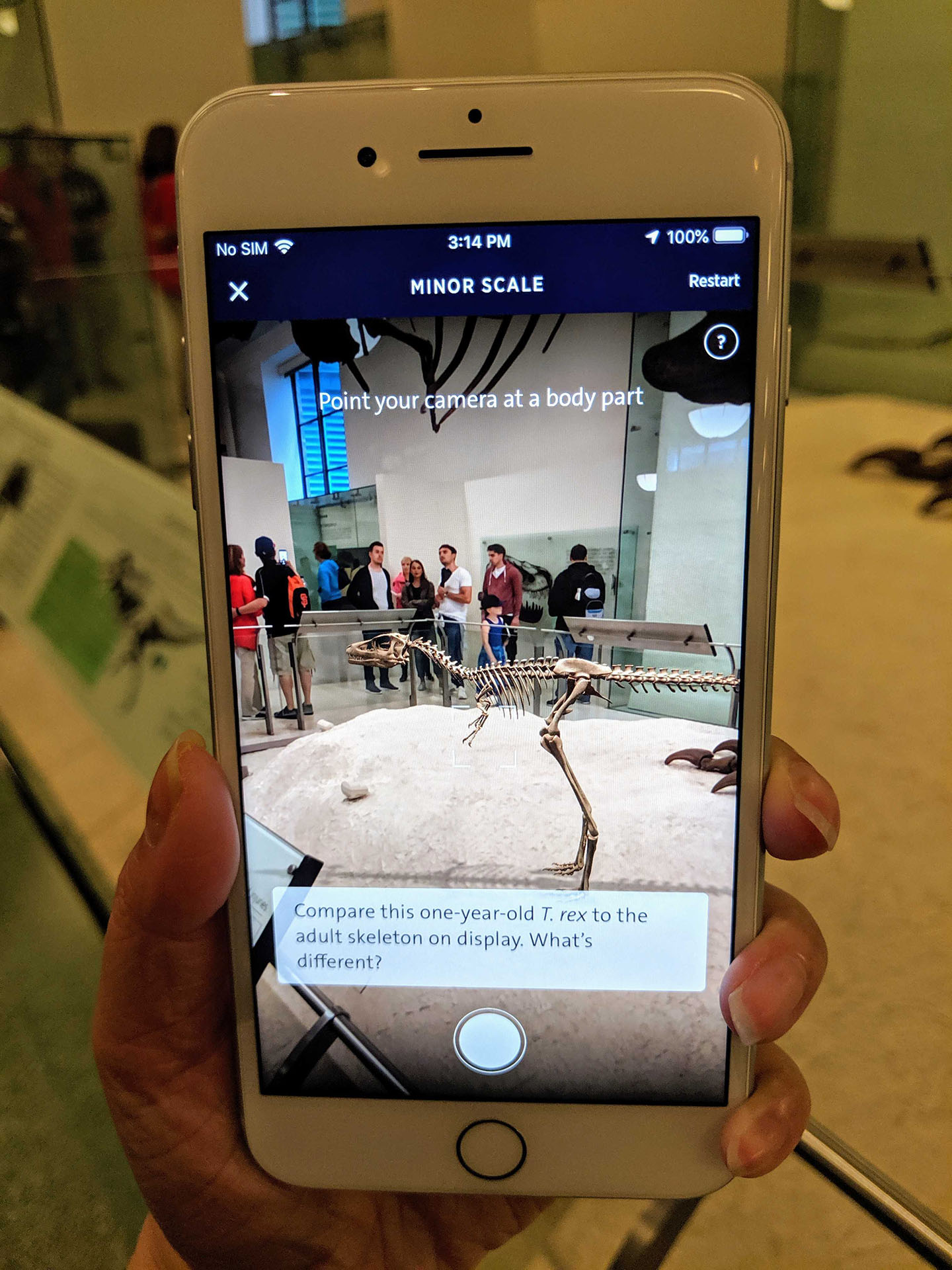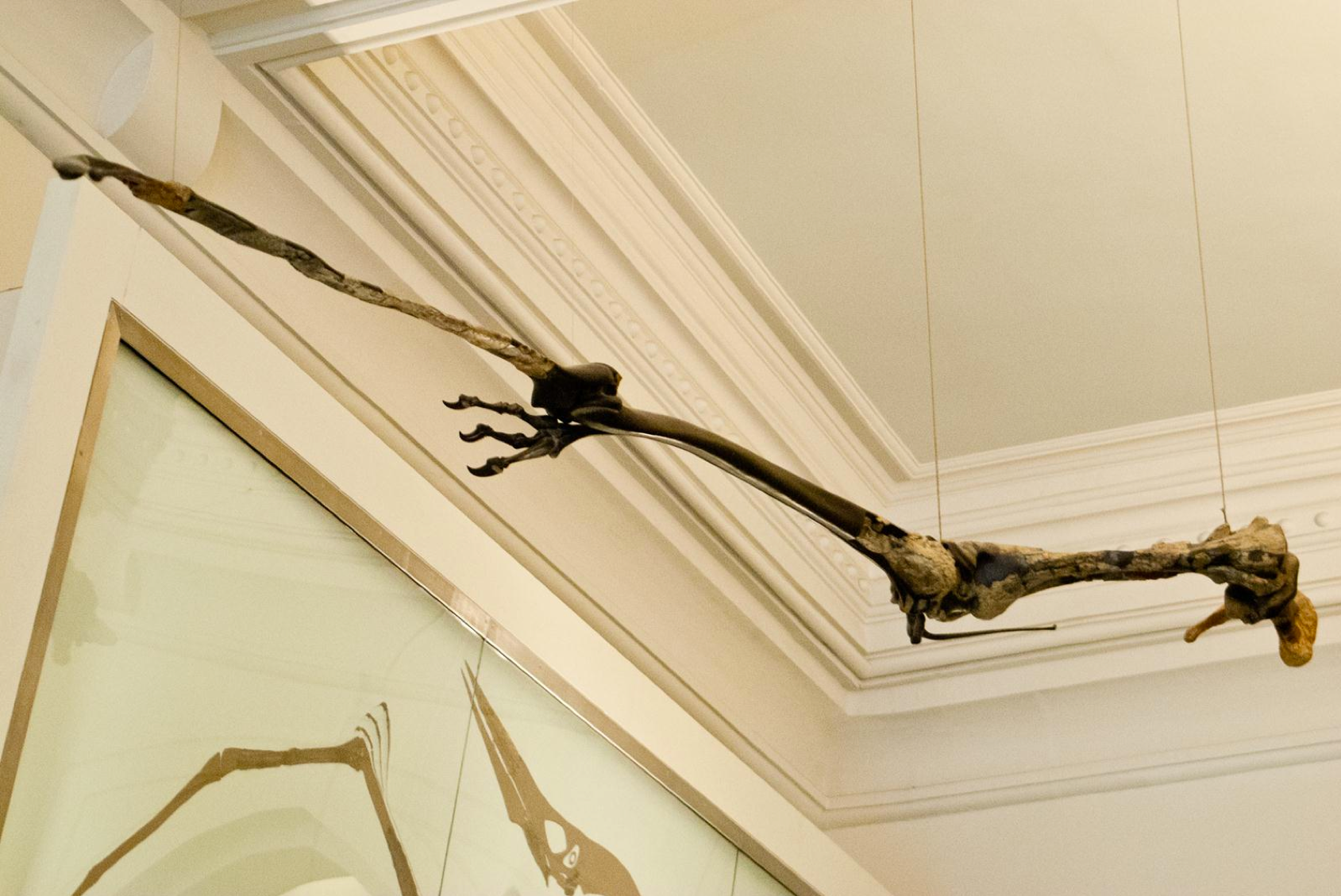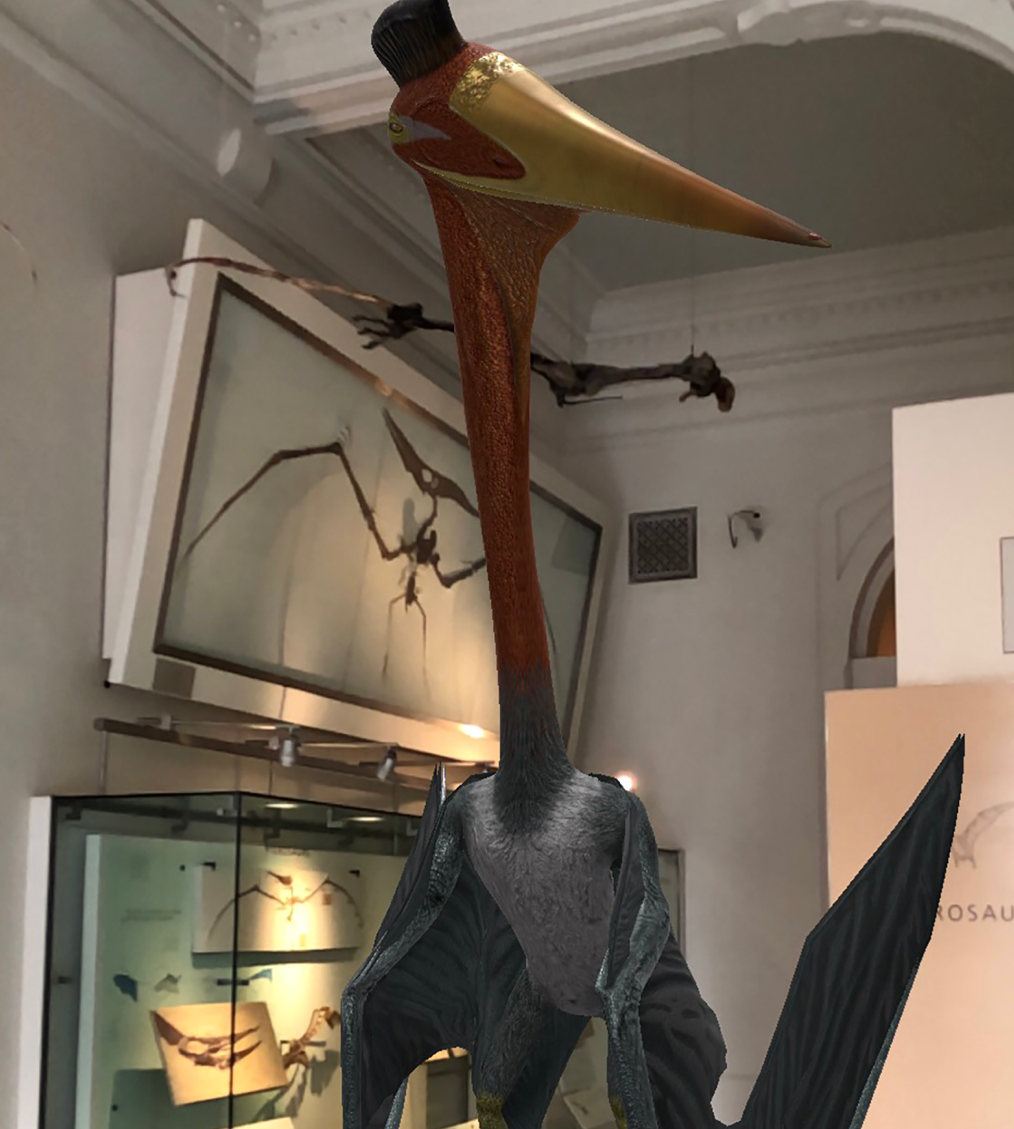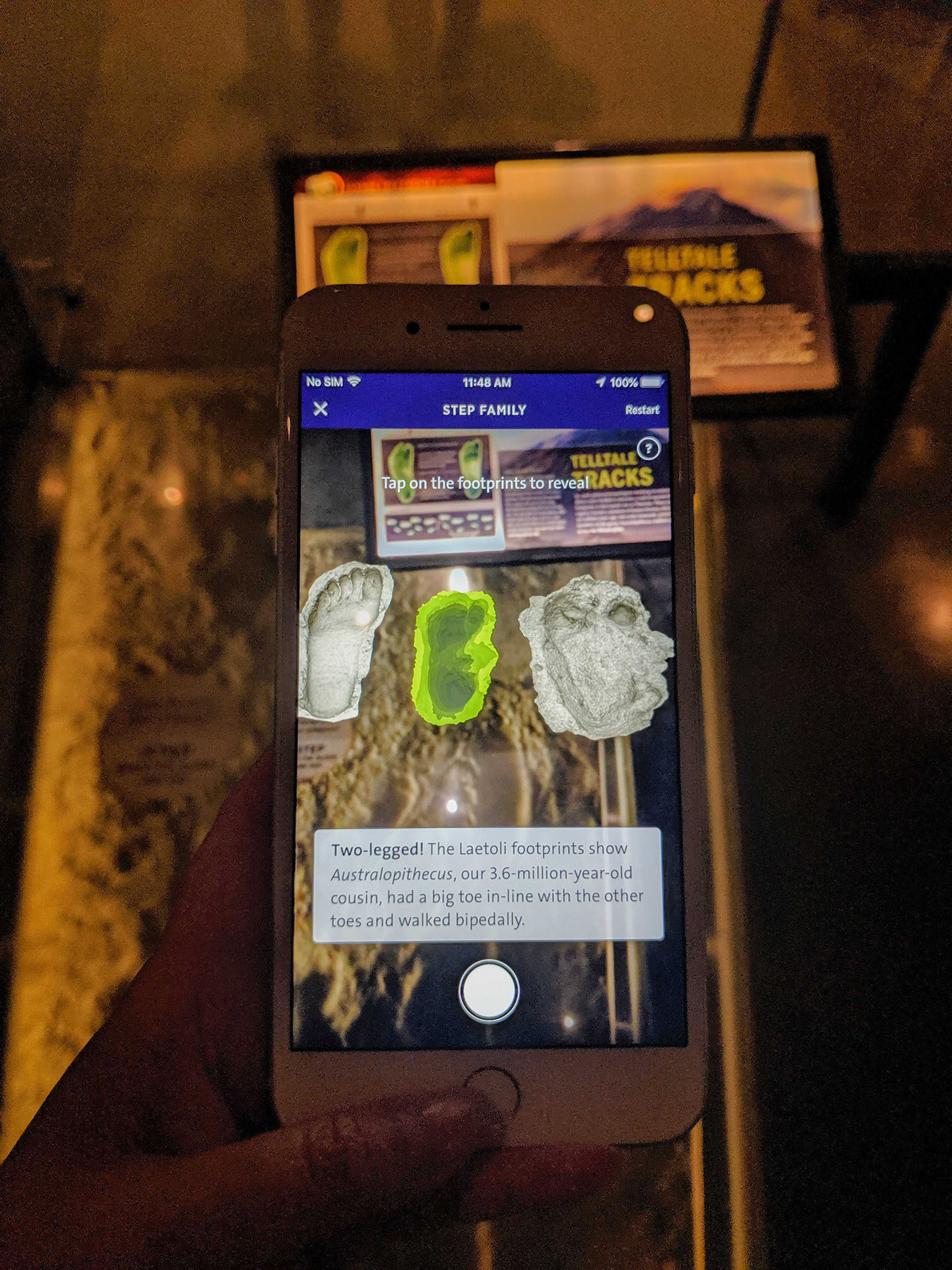AR content in Explorer app
In collaboration with the AMNH Digital team, we produced five augmented reality (AR) experiences, which are embedded in the Museum’s Explorer app, a self-guided tour and wayfinding app for visitors. We worked with Museum scientists to acquire, visualize, animate and annotate data assets. All experiences were designed to enhance exhibits on display in the Museum.

T. rex skeleton, Hall of Saurischian Dinosaurs
Compare a baby T. rex skeleton (in AR) to the adult on display. Young T. rex had comparatively longer arms and legs, and a smaller jaw—evidence that its role was closer to pursued prey than fearsome predator. When player points camera at head, arms or legs of the baby T. rex, relevant text appears.

Pterosaur, Hall of Vertebrate Origins
Stand face-to-chest with the giraffe-sized Quetzalcoatlus northropi (in AR), a model developed from the only fossil of this pterosaur species discovered: a single arm bone (on display). See a scaled-down Quetzalcoatlus in flight, an animation based on biomechanical models.


Mako shark, Hall of Biodiversity
View a life-sized Mako shark up close in AR. See how it swims and uses a protractible jaw to catch tuna. We animated a CT scan of a Mako skeleton to complement a physical model on display.
Leotoli footprints, Hall of Human Origins
Compare 3D scans of footprints (in AR) from three great apes. Can you tell who’s a two-legged walker and who walks on all fours? Using depth data from Australopithecus fossil footprints (on display) and from plaster casts of human and chimp footprints, we demonstrated how scientists deduce that our extinct cousin was bipedal.

Lyle’s Flying Fox (fruit bat), Hall of Advanced Mammals
There are over 1,300 known bat species, each with a unique skull shape. Visitors enlarge and explore CT scans of three bat skulls (in AR) to experience this variety. And in the physical exhibit, they learn about the adaptations that drive bat diversity.
